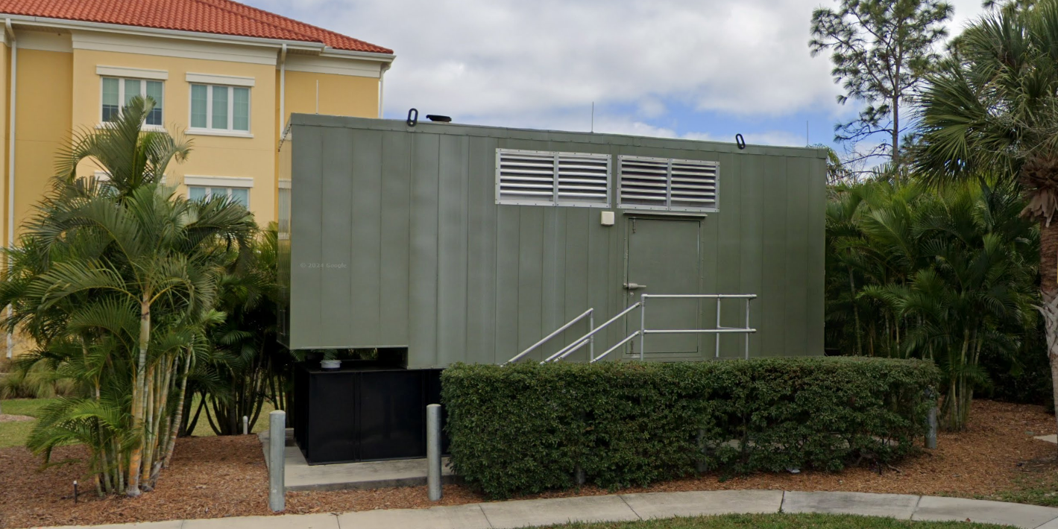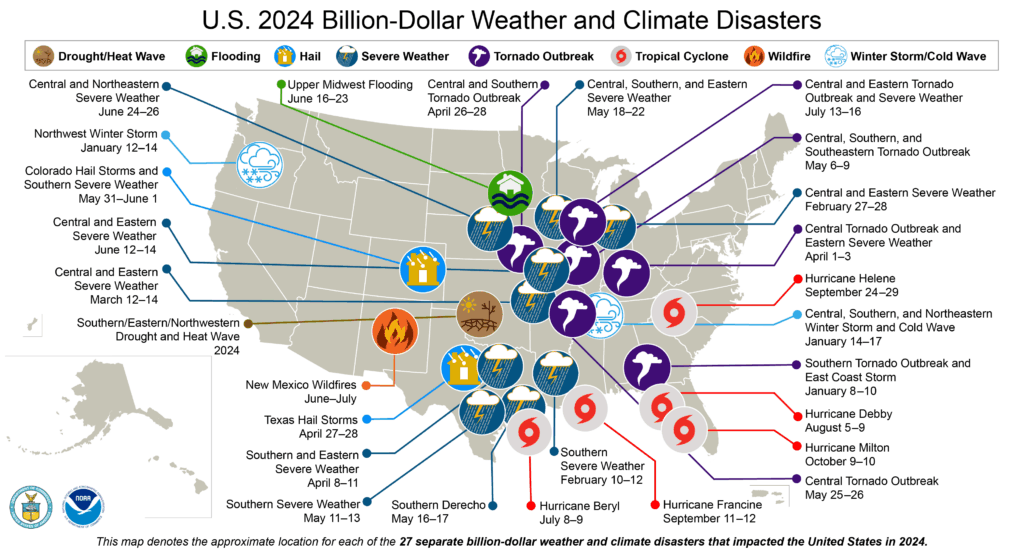By John D. Reese, PE, LEED AP
I recently re-visited a retirement community on the Gulf Coast of Florida that we designed in 2017. I visit this community often because of the special friendships I formed during the several years of design and construction. Each time I arrive on campus and walk the lush grounds, my eye is drawn to the emergency generator that sits in the yard adjacent to the skilled care building.

A 750KW Generator is Proudly Displayed Inside a Senior Living Community in Florida
The generator, which provides backup power for 100% of their skilled care building, looms large even to an engineer used to seeing large equipment. By the time the 750KW generator is enclosed in a hurricane resistant enclosure and sits on a 4’ tall sub-base fuel tank, I feel like I’m looking at a green railroad car. During my recent visit, I was joined by the community’s vice president of facilities. I asked him, “Do you ever receive complaints from residents or the children of residents about the size of the generator”. Without a pause he responded, “Never. In fact, a walk by the generator is part of the tour for the family of perspective residents. They find peace of mind knowing that their family member is in a home that has 100% backup during the many extended power outages.”
Providing 100% emergency power in retirement communities is a relatively new design strategy. If we had placed a generator of that size in a visible location fifteen years ago, we would have been part of every architect’s lessons learned list. But things have changed, whether the result of new codes created as a reaction to massive storms or facilities understanding the importance of emergency power to the quality of life of their residents. The underlying reason is clear. From 1980 to 1989 the US saw an average of 3.3 billion-dollar weather events per year. Last year alone the US experienced 27 billion-dollar weather events; almost as many as the entire 1980’s decade. And these events aren’t just in Florida (hurricanes) and California (wildfires). Many of these disasters occur in the Northeast, Mid-Atlantic, the Midwest, etc. in the form of massive ice storms, tornadoes, and floods.
 In 2024, the United States experienced 27 separate weather or climate disasters that each resulted in at least $1 billion in damages. NOAA map by NCEI.
In 2024, the United States experienced 27 separate weather or climate disasters that each resulted in at least $1 billion in damages. NOAA map by NCEI.
These railroad car sized generators are symbolic of retirement campuses’ strategic move to resiliency and utility independence. Individual building and even campus wide emergency generators protect from electrical utility power outages, but the strength of these catastrophic weather events coupled with the duration that campuses can be without public utilities requires strategies for independence from other utilities such as water and natural gas. On site water supply systems or connections to allow for simple connections to portable water storage trucks are gaining momentum among communities. Other communities implemented redundant back-up propane fuel sources for heating systems. And other communities have made strategic decisions to decarbonize their heating systems, switching to systems that rely on electricity in lieu of fossil fuels, which allows the heating systems to be connected to the emergency generator.
Communities, such as Babcock Ranch in Florida, have taken the resilient strategies to another level by designing communities as microgrids (facilities that can act completely independent of public and private utility companies).
Regardless of the strategic approach, we have seen a significant shift in focus on utility independence due to the number and intensity of these weather events. Upcoming articles will dig deeper into resilient strategies for electricity, natural gas and water independency with an emphasis on creative ways to minimize implementation costs.
Recommended Reading or Listening – Guy Raz How I Built This podcast with Syd K on Babcock Ranch.
https://wondery.com/shows/how-i-built-this/episode/10386-hibt-lab-babcock-ranch-syd-kitson/
John is a Licensed Professional Engineer, a LEED Accredited Professional, and Partner at Reese Hackman.
